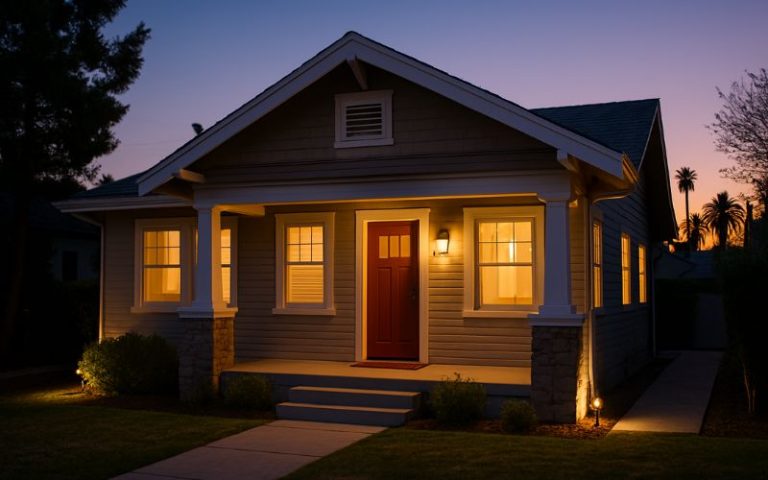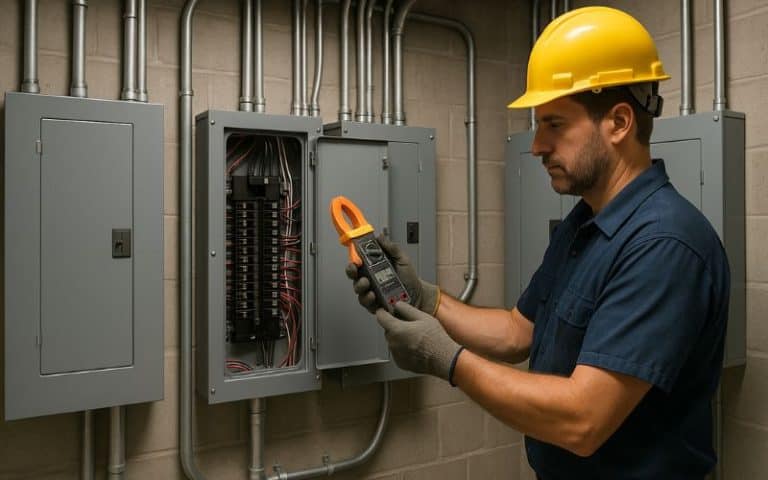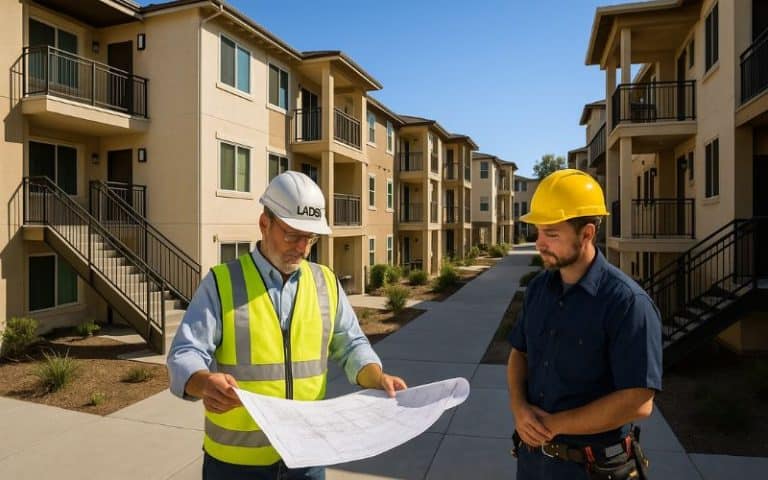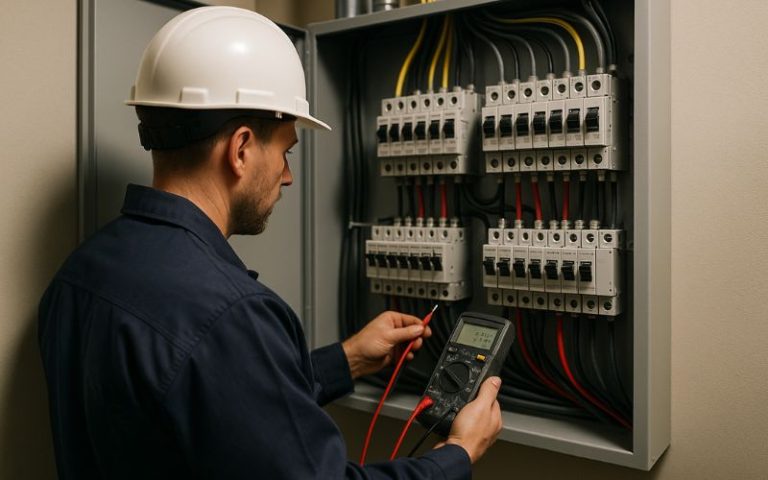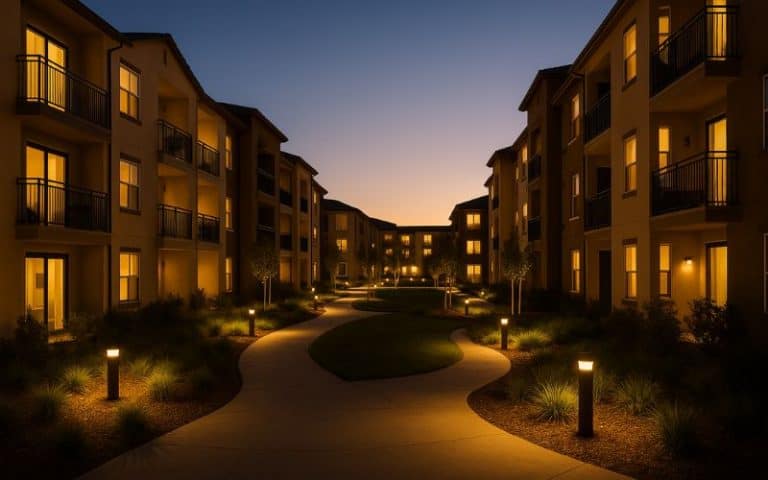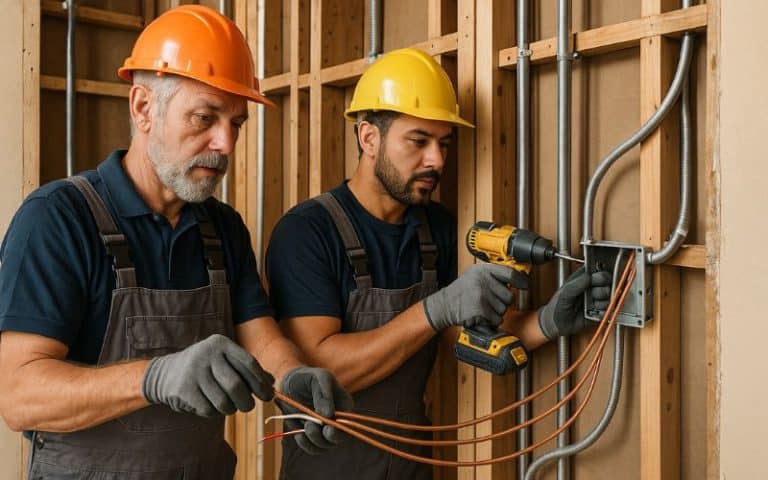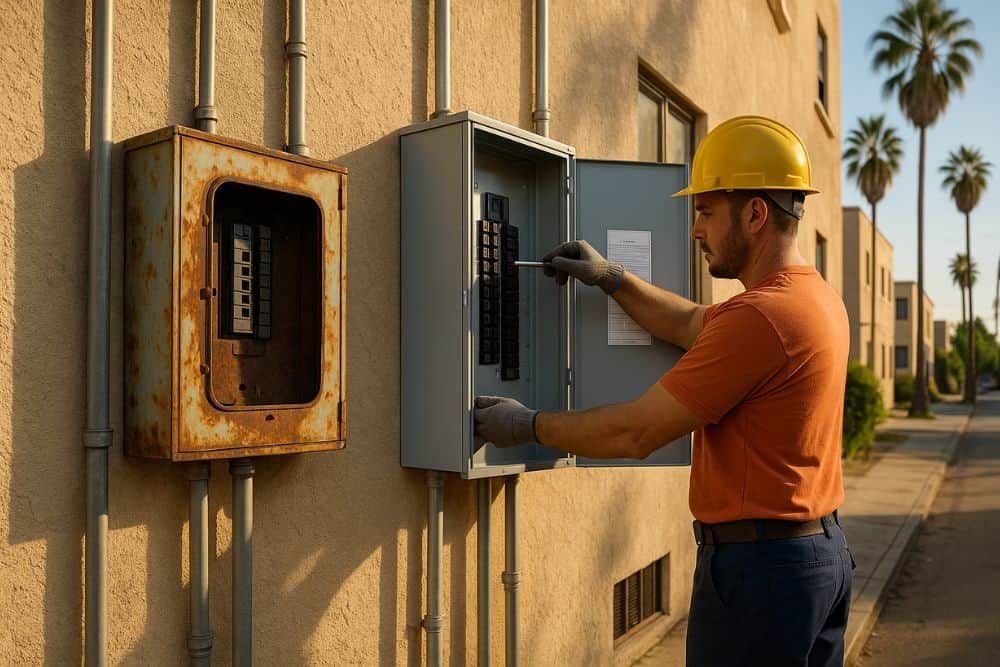
Top Signs Your LA Property Needs an Electrical Panel Upgrade
In a city as dynamic as Los Angeles, where buildings range from 1920s-era apartment complexes to modern office spaces, the electrical panel is often one of the most neglected components of a property. Yet it plays one of the most critical roles, distributing power safely and reliably to every part of your building.
For property managers, business owners, and homeowners alike, an outdated or overloaded panel is more than just an inconvenience. It’s a safety hazard, a code compliance issue, and a liability risk, especially as the 2025 electrical code changes take effect across California. Insurance companies are increasingly flagging obsolete panels, and LADBS inspectors are paying closer attention to aging infrastructure.
So how do you know if it’s time for an upgrade?
This article outlines the most common, and often overlooked, warning signs that your electrical panel needs replacement. From persistent breaker trips to outdated brands like Zinsco and Federal Pacific, we’ll show you what to watch for and how RG Electric can help you stay safe, legal, and fully powered.
What an Electrical Panel Does and Why It Matters
An electrical panel, sometimes called a breaker box, load center, or service panel, is the heart of your building’s electrical system. It receives electricity from the utility company and distributes it to circuits that power lighting, appliances, HVAC, and everything in between.
In Los Angeles properties, panels must also handle extreme weather conditions, added tenant loads, aging infrastructure, and local code requirements. But not all panels are created equal, and many older buildings are running on equipment designed for far simpler systems.
Distributing Power Safely
Every circuit in your building connects to a breaker in the panel. These breakers are designed to trip and stop power flow if something goes wrong, like an overloaded circuit, short circuit, or ground fault. But if your panel is outdated, the breakers may fail to trip properly. That’s when the real dangers begin: overheating wires, sparks, and even fires.
Modern panels include advanced protection, like:
- Arc Fault Circuit Interrupters (AFCIs) to detect dangerous arc patterns
- Ground Fault Circuit Interrupters (GFCIs) for moisture-prone areas
- Surge protection to shield electronics from voltage spikes
If your panel lacks these safety features, you’re already behind California code, and putting your property at risk.
Meeting Today’s Electrical Demands
Today’s buildings use more electricity than ever before. From commercial-grade HVAC units and EV chargers to smart appliances and multi-device charging stations, the power draw on circuits has grown significantly, especially in multi-unit residential properties and office buildings.
Older panels, especially those under 100 amps or with limited breaker spaces, simply can’t keep up. This leads to:
- Overloaded circuits
- Breaker trips
- Overheating and system failures
When your panel is undersized or outdated, every added device becomes a potential hazard.
Keeping Your Property Code-Compliant
The Los Angeles Department of Building and Safety (LADBS) enforces strict requirements for panels, especially when permits are pulled for electrical work or renovations. If your panel doesn’t meet the latest standards, including proper grounding, labeling, and capacity, your project could be delayed or denied entirely.
Outdated panels also put you at odds with the California Electrical Code, which adopts updates every three years, including new safety requirements in 2025.
Warning Signs Your Electrical Panel Is Obsolete or Unsafe
Identifying an outdated or dangerous panel isn’t always easy, especially if you’re not familiar with the warning signs. But the earlier you recognize the problem, the sooner you can avoid costly repairs, inspection delays, or fire hazards.
Here are the most common signs your panel needs to be replaced, especially in older Los Angeles buildings.
Frequent Breaker Trips
If you’re resetting breakers on a regular basis, it’s a clear sign your panel is struggling to handle your current electrical load. Tripped breakers are designed to protect your circuits from overheating, but if it happens too often, your panel may be undersized, worn out, or improperly balanced.
This is especially common in buildings that have added new appliances, HVAC units, or EV chargers without upgrading the panel to match.
Outdated or Dangerous Brands
Several panel brands installed in LA properties between the 1950s and 1980s are now considered serious fire hazards. These include:
- Zinsco (Sylvania): Known for failing to trip during overloads and melting internal bus bars.
- Federal Pacific Electric (FPE): A widely recalled brand linked to high failure rates and electrical fires.
- Challenger: Panels from the 1980s with breakers that often overheat and degrade over time.
- Pushmatic: An older brand with mechanical weaknesses and no modern AFCI or GFCI support.
If your panel has any of these brand names or you’re unsure of its make, it’s time for a professional inspection.
Rust, Corrosion, or Burn Marks
Visible rust on the panel door, discoloration around breakers, or a burnt smell coming from the breaker box are all signs of overheating or water intrusion. In Los Angeles, where older buildings may have exterior-mounted panels exposed to weather, these issues are common and dangerous.
Moisture, especially, compromises breaker function and increases the risk of arcing or short circuits.
Unlabeled or Poorly Labeled Circuits
Every circuit in your panel should be clearly labeled with its function, for example, “kitchen lights” or “Unit 3 HVAC.” If your panel has no labels, or the labels are faded, missing, or incorrect, it can create delays in maintenance and lead to the wrong circuit being shut off in an emergency.
Improper labeling is also a code violation under current LADBS and NEC standards.
Lack of Modern Safety Features
If your panel doesn’t include GFCI and AFCI protection in the required areas, such as kitchens, bathrooms, outdoor outlets, or sleeping areas, it’s not up to code. Many older panels were installed before these devices were standard, and retrofitting them into outdated panels can be unreliable or even impossible.
Modern panels are designed to integrate these safety features and provide better protection across all circuits.
The Panel Is Over 30 Years Old
Even if your panel seems to be functioning, age is a serious factor. Most residential and commercial panels have a functional lifespan of 25 to 40 years, depending on environmental conditions and maintenance. Panels older than 30 years are often:
- Worn internally
- Undersized for modern loads
- Lacking code-compliant safety features
If your building hasn’t had a panel upgrade in decades, a professional evaluation is essential.
The Hidden Costs of Keeping an Outdated Panel
Delaying a panel upgrade might seem like a way to save money, but in reality, holding on to obsolete or unsafe electrical infrastructure can lead to major financial, legal, and operational setbacks, especially in Los Angeles, where safety standards and inspection requirements are among the most rigorous in the country.
Insurance Refusals and Denied Claims
More insurance companies are refusing to cover buildings that still rely on outdated panels like Zinsco, FPE, or Challenger. If your provider flags your panel as a risk, you could face higher premiums, policy nonrenewals, or exclusions in coverage.
Worse, if an electrical fire or equipment failure occurs and it’s linked to a noncompliant panel, your claim could be denied entirely. That could mean tens or even hundreds of thousands of dollars in uncovered damages, legal liability, and lost income if your tenants are forced to vacate.
Fire Hazards and Life Safety Risks
According to the National Fire Protection Association (NFPA), electrical distribution systems are one of the leading causes of structure fires in the United States. In buildings with outdated panels, the risk is significantly higher because:
- Breakers may fail to trip during overloads
- Arcing may go undetected
- Corrosion or loose connections may spark fires behind walls
In high-occupancy buildings, the consequences are even more severe. A fire originating in one unit or commercial space can quickly spread through walls and conduit paths, putting dozens of people in danger.
Costly Repairs and Emergency Service Calls
Outdated panels are more prone to failure, especially during high-demand periods like summer heatwaves or winter storms. Frequent power loss, melted breakers, or burned wires often lead to emergency repair calls, which are more expensive and disruptive than planned upgrades.
In some cases, these failures also damage connected appliances or HVAC equipment, leading to further costs and potential tenant disputes.
Tenant Complaints and Retention Issues
In commercial properties, electrical reliability is a key factor in tenant satisfaction. Flickering lights, frequent outages, or power interruptions during business hours can quickly turn into complaints, or worse, early lease terminations.
For residential property managers, an unreliable electrical system invites frustration and negative reviews. In a competitive LA rental market, even small issues can impact retention and occupancy rates.
Delays During Renovations or Permitted Work
If you plan to pull permits for a remodel, tenant improvement, or major equipment installation, LADBS will likely require your panel to meet current code. If it’s not, your project may be halted mid-process until a replacement is completed.
That can delay construction timelines, increase contractor costs, and impact your return on investment. By upgrading the panel proactively, you avoid these setbacks and keep your improvement projects on track.
How RG Electric Performs Safe, Code-Compliant Panel Upgrades
When you realize your building’s electrical panel may be outdated, unsafe, or noncompliant, it can feel like you’re staring down a complicated, high-stakes challenge. For Los Angeles property managers and business owners, it’s not just about flipping out old hardware, it’s about safeguarding your property, protecting your tenants, and avoiding costly inspections or insurance issues.
At RG Electric, we understand the pressure. That’s why our panel upgrade process is built to remove uncertainty, reduce downtime, and deliver lasting peace of mind.
It Starts With Understanding Your Building
We begin every project with a deep evaluation of your property’s unique electrical demands. Whether it’s a 20-unit apartment building in Silver Lake or a busy storefront in West LA, every building tells a different story.
We assess not just what’s installed now, but how the system is being used. Are circuits overloaded? Are tenants plugging in more high-draw equipment than the panel was designed for? Is there room for future upgrades, like EV chargers or solar integration?
Our goal is to help you understand your system clearly, what’s working, what’s failing, and what’s required to bring it into compliance.
Planning for Safety, Compliance, and Growth
Once we’ve assessed your panel, we build a plan tailored to your building’s usage, capacity needs, and future goals. This includes calculating safe load levels, selecting the right panel type and size, and identifying where to incorporate modern safety devices like AFCIs and surge protectors.
We also look at the broader picture, like whether your panel needs relocation for better accessibility, or whether your conduit or grounding systems need upgrading as part of the job.
Throughout this phase, we keep you informed and involved. No surprises, no jargon, just clear, actionable recommendations.
Navigating LADBS Permits and Utility Coordination
Many property owners get tripped up when it comes to permitting and inspections. RG Electric takes that off your plate. We handle the full permit process with the Los Angeles Department of Building and Safety, from load calculations and submittals to coordinating disconnects with LADWP when needed.
Because we work in LA every day, we know exactly what LADBS inspectors look for, and how to meet those expectations the first time.
Execution With Minimal Disruption
We know your tenants or business operations can’t afford extended downtime. That’s why we plan installations around your schedule, sometimes working in phases or after hours, to ensure the least disruption possible.
Our team arrives with everything prepped and staged, so once we begin, the work flows smoothly. Panels are replaced with precision, circuits are tested, and labeling is finalized so that everything passes inspection and works flawlessly.
Most panel upgrades are completed in a day or two. But we stay until the job is done right, not just until it’s done fast.
Lasting Documentation and Support
After the upgrade, you’re not left on your own. We provide all the documentation you’ll need for insurance, fire safety compliance, or future repairs. We also keep digital records of your panel configuration, so if a breaker ever fails or you plan another improvement, we’re ready to support you immediately.
You’ll also get warranty coverage and a dedicated point of contact for follow-up service, because good electrical work doesn’t stop when the panel is closed.
When you realize your building’s electrical panel may be outdated, unsafe, or noncompliant, it can feel like you’re staring down a complicated, high-stakes challenge. For Los Angeles property managers and business owners, it’s not just about flipping out old hardware, it’s about safeguarding your property, protecting your tenants, and avoiding costly inspections or insurance issues.
At RG Electric, we understand the pressure. That’s why our panel upgrade process is built to remove uncertainty, reduce downtime, and deliver lasting peace of mind.
It Starts With Understanding Your Building
We begin every project with a deep evaluation of your property’s unique electrical demands. Whether it’s a 20-unit apartment building in Silver Lake or a busy storefront in West LA, every building tells a different story.
We assess not just what’s installed now, but how the system is being used. Are circuits overloaded? Are tenants plugging in more high-draw equipment than the panel was designed for? Is there room for future upgrades, like EV chargers or solar integration?
Our goal is to help you understand your system clearly, what’s working, what’s failing, and what’s required to bring it into compliance.
Planning for Safety, Compliance, and Growth
Once we’ve assessed your panel, we build a plan tailored to your building’s usage, capacity needs, and future goals. This includes calculating safe load levels, selecting the right panel type and size, and identifying where to incorporate modern safety devices like AFCIs and surge protectors.
We also look at the broader picture, like whether your panel needs relocation for better accessibility, or whether your conduit or grounding systems need upgrading as part of the job.
Throughout this phase, we keep you informed and involved. No surprises, no jargon, just clear, actionable recommendations.
Navigating LADBS Permits and Utility Coordination
Many property owners get tripped up when it comes to permitting and inspections. RG Electric takes that off your plate. We handle the full permit process with the Los Angeles Department of Building and Safety, from load calculations and submittals to coordinating disconnects with LADWP when needed.
Because we work in LA every day, we know exactly what LADBS inspectors look for, and how to meet those expectations the first time.
Execution With Minimal Disruption
We know your tenants or business operations can’t afford extended downtime. That’s why we plan installations around your schedule, sometimes working in phases or after hours, to ensure the least disruption possible.
Our team arrives with everything prepped and staged, so once we begin, the work flows smoothly. Panels are replaced with precision, circuits are tested, and labeling is finalized so that everything passes inspection and works flawlessly.
Most panel upgrades are completed in a day or two. But we stay until the job is done right, not just until it’s done fast.
Lasting Documentation and Support
After the upgrade, you’re not left on your own. We provide all the documentation you’ll need for insurance, fire safety compliance, or future repairs. We also keep digital records of your panel configuration, so if a breaker ever fails or you plan another improvement, we’re ready to support you immediately.
You’ll also get warranty coverage and a dedicated point of contact for follow-up service, because good electrical work doesn’t stop when the panel is closed.
Don’t Wait for a Problem, Upgrade Before It Becomes One
If your electrical panel is showing signs of age, strain, or outdated design, don’t wait for the warning signs to turn into emergencies. In Los Angeles, where buildings face extreme usage demands and strict inspection standards, staying ahead of panel issues isn’t just smart, it’s essential.
Upgrading your panel today can protect your property from electrical fires, failed inspections, lost tenants, and insurance claims that never get paid. It’s not about replacing what’s old for the sake of it. It’s about making sure your building is safe, scalable, and compliant for years to come.
At RG Electric, we’ve helped property managers, business owners, and homeowners throughout Los Angeles modernize their electrical systems with confidence. We know the codes. We know the permits. And we know how to do it right, without unnecessary downtime or costly surprises.
If you’re unsure about the condition of your panel, we’ll evaluate it. If you’re ready to act, we’ll guide the process from start to finish.
Start with a free, no-pressure inspection. Let’s make sure your panel, and your property, are ready for what’s next.
📞 Call RG Electric at (323) 521‑5131

